The days are finally getting noticeably longer and the change in seasons is on the horizon. I’ve had a terrible case of spring fever this year after spending the winter dreaming and scheming about all the possibilities for the acreage on our new farm.
On a recent morning walk around the property I spotted a few brave blooms pushing up through the cold earth: my treasured hellebores! As some of the very first perennials to bloom in my cut flower garden, they are always joyful sight and a sure sign that spring is on the way.
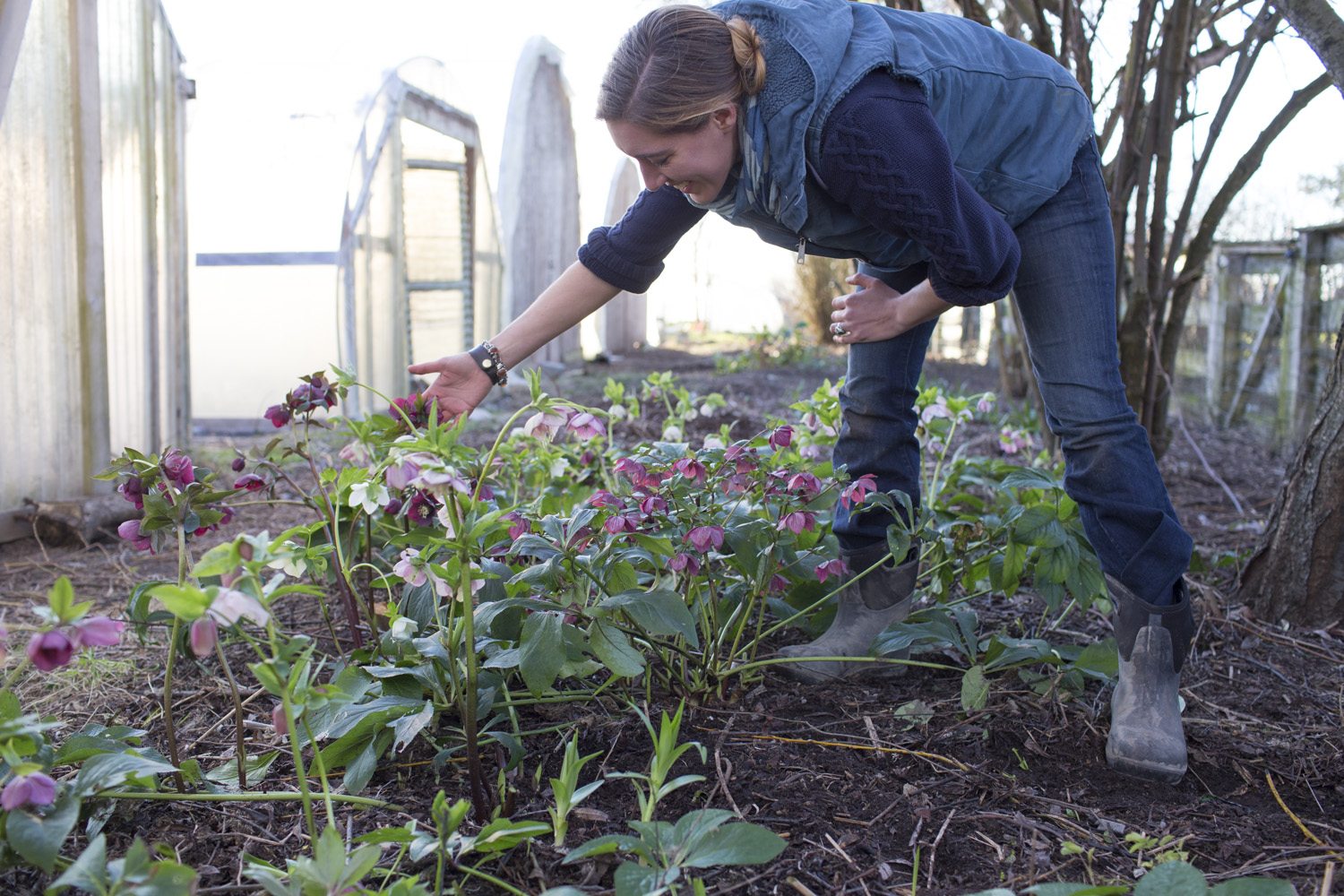 For years, come mid winter, all of my gardening friends would be crawling around in their flower beds, heads cocked to the sky, admiring the pretty nodding flower of their prized hellebores. I would usually get down in the mud too and halfheartedly admire the crop. But for some reason, they just didn’t have the same effect on me that they did other gardeners.
For years, come mid winter, all of my gardening friends would be crawling around in their flower beds, heads cocked to the sky, admiring the pretty nodding flower of their prized hellebores. I would usually get down in the mud too and halfheartedly admire the crop. But for some reason, they just didn’t have the same effect on me that they did other gardeners.
That was until I started growing my own. Now every winter you’ll find me crawling around like a fool in my shade garden, oohing and aahing over the delicate nodding blossoms too. If we have company, I’ll make them get down low and experience the magic with me. Then I’ll hack off a handful of flowering stems and send them home a big ole bouquet. I admit, I was late to join what I call the Hellebore Appreciation Society. Are you a member yet?
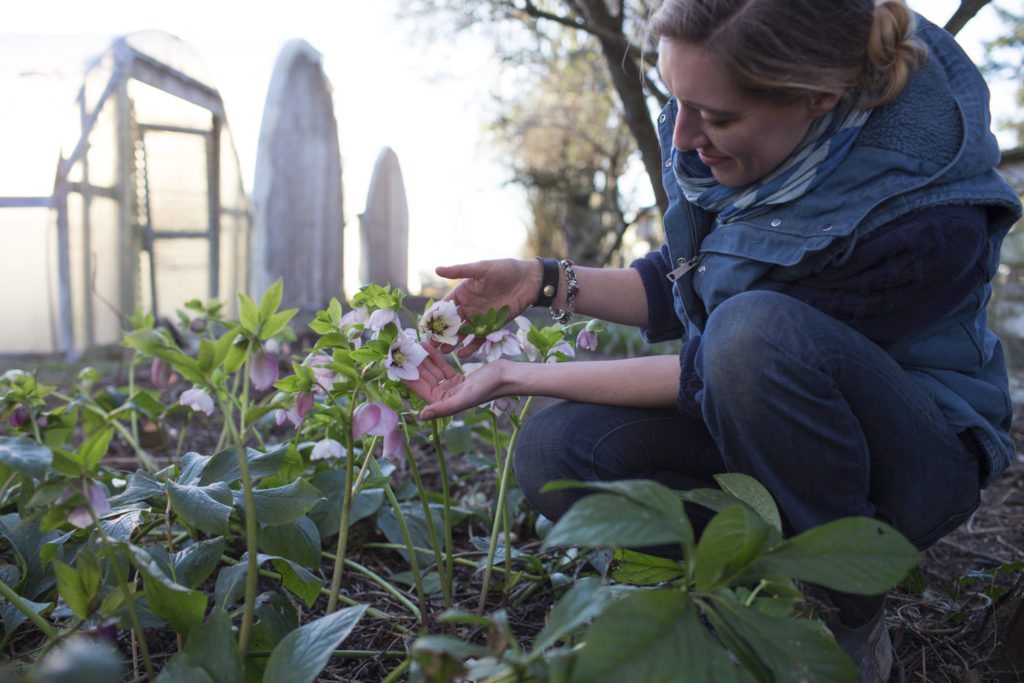
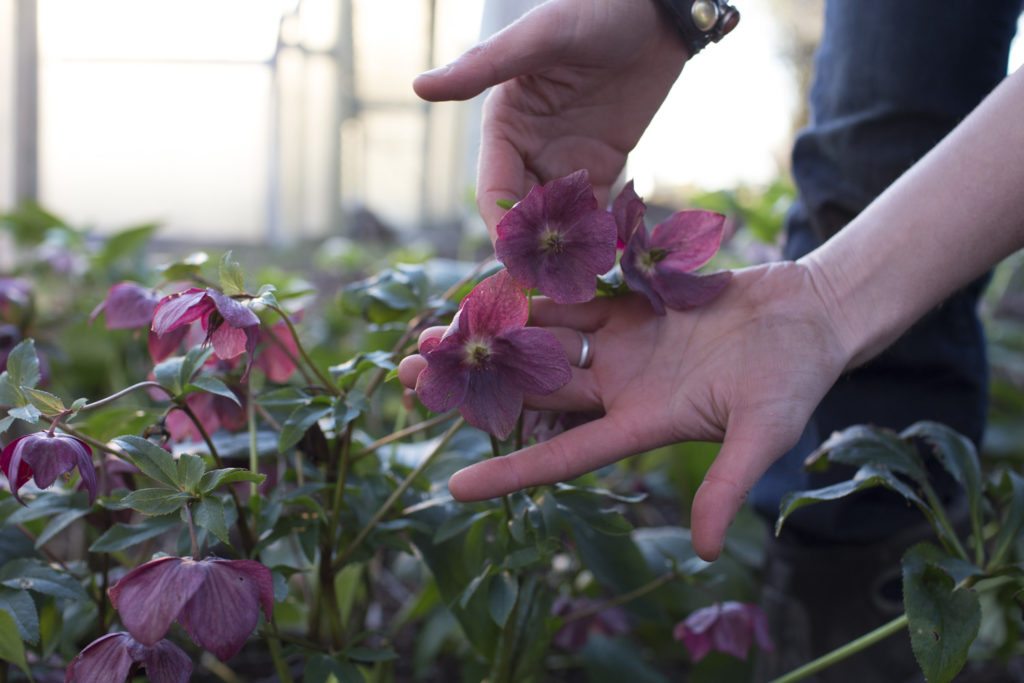
Hellebores, also commonly called lenten rose, are super easy to grow and extremely long-lived. These little beauties bloom from mid to late winter all the way through early summer. Hellebores come in a gorgeous array of colors in array of shades including pink, mauve, an almost-black burgundy, green, buttery yellow and creamy whites. Some of my favorites include those frilly double and those with delicately freckled blooms.
These perennial plants prefer well-drained, rich, organic soil. Hellebores thrive in the shade, making them a great choice if your garden doesn’t have full sun. Their rough, serrated leaves also make them resistant to deer and other critters. Hellebores take a few years to become established, so don’t plan on harvesting a lot of blooms the first year or two.
You can sometimes find hellebores at garden centers, but expect to pay premium prices. Most varieties will reseed, but since they are hybrids, you never know what you’ll get. Barry Glick (aka the Hellebore King) at Sunshine Farm & Gardens is a great source for hard-to-find hellebores.
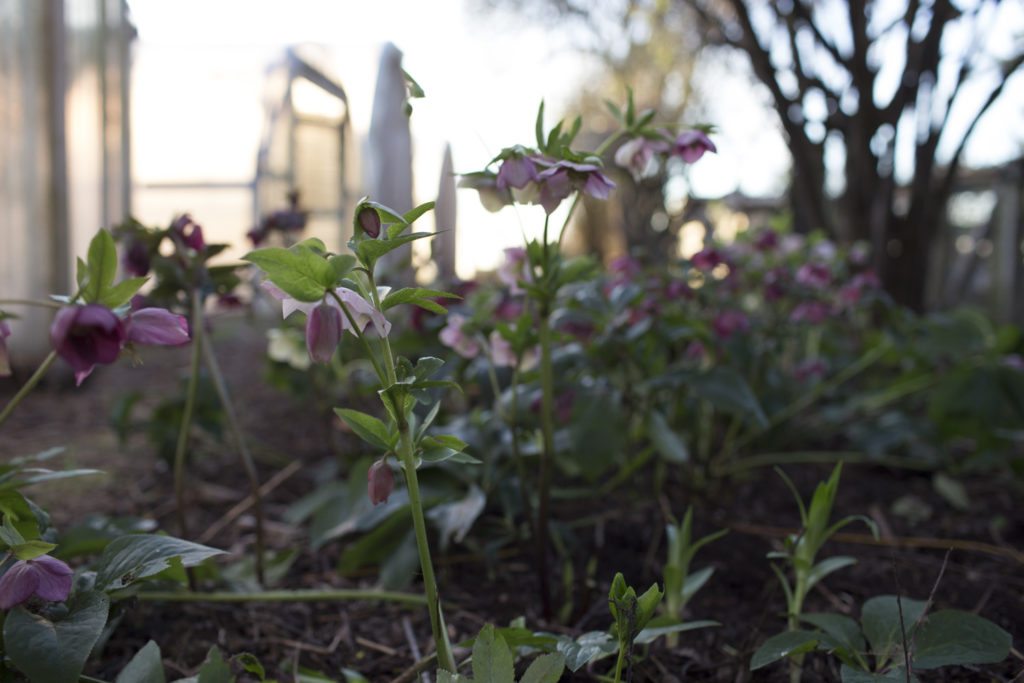
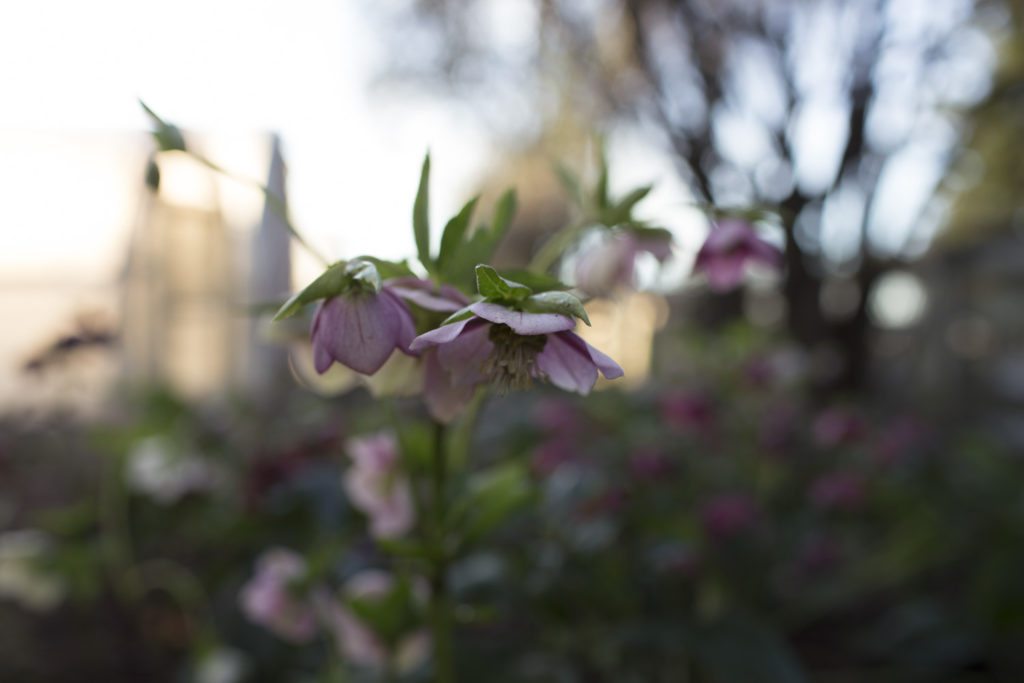
Years ago I planted 50 baby hellebores on the north side of our greenhouses. It’s the perfect shady spot, protected from harsh wind and temperature extremes.
Each winter, before the flowers emerge I spread a thick layer of compost around the plants as an amendment. It also doubles as mulch, keeping weeds down for the remainder of the year. When new growth starts to emerge in mid winter, I go through and remove all of the tattered, ugly leaves so that floral display is more visible.
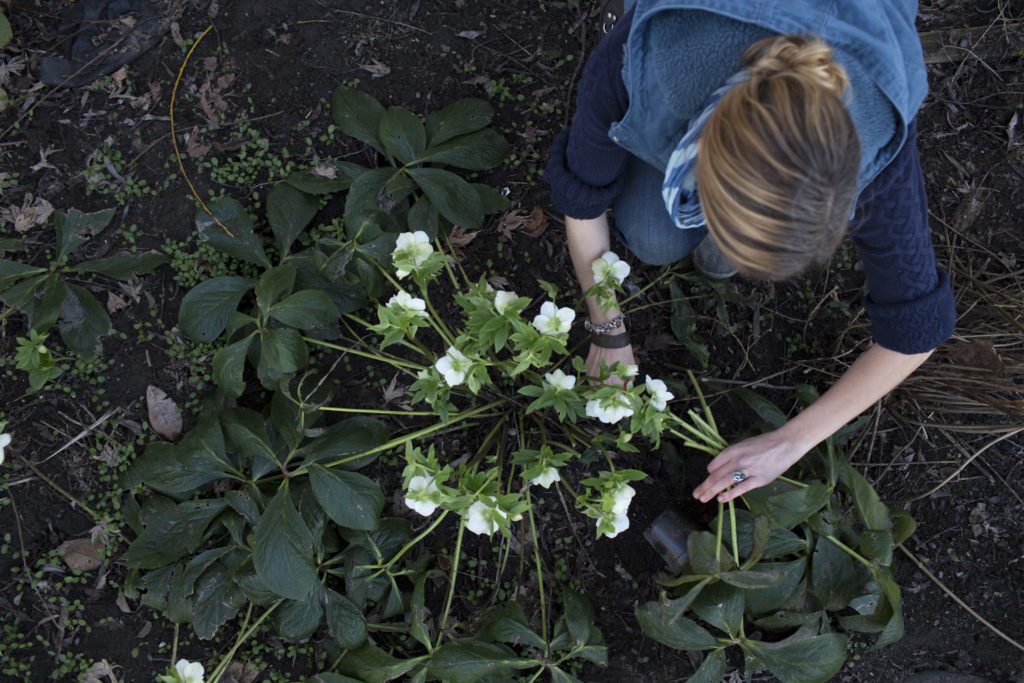
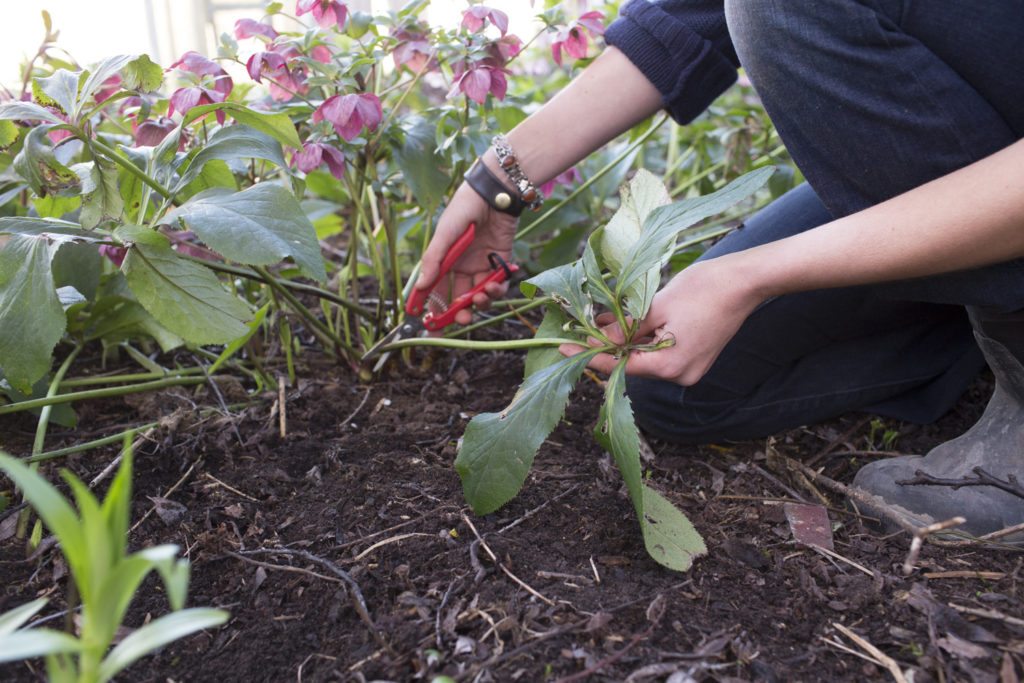
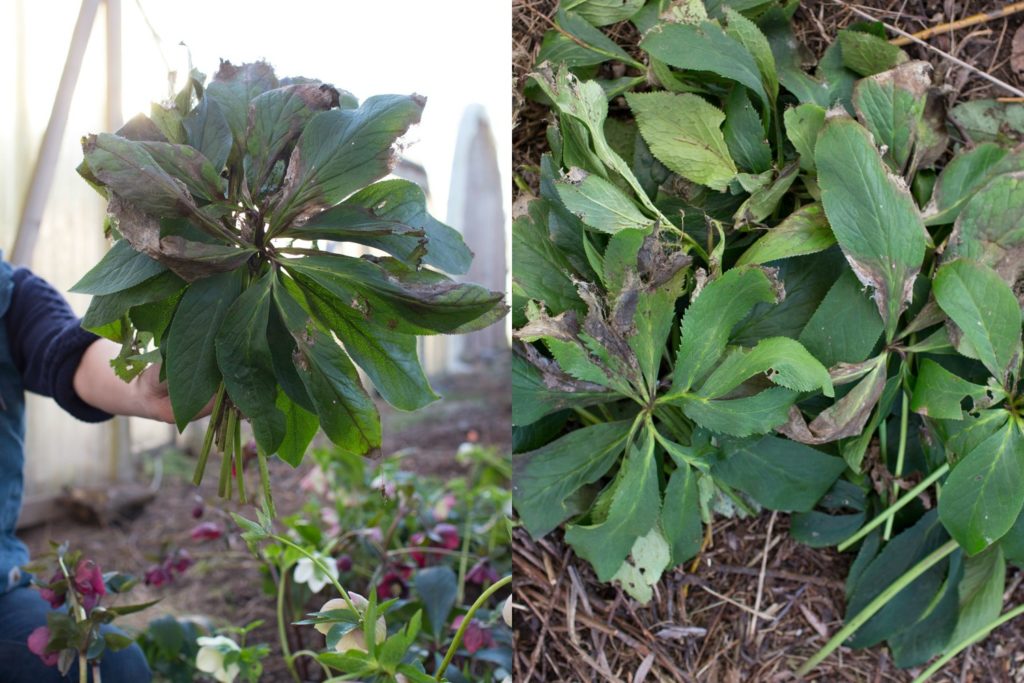
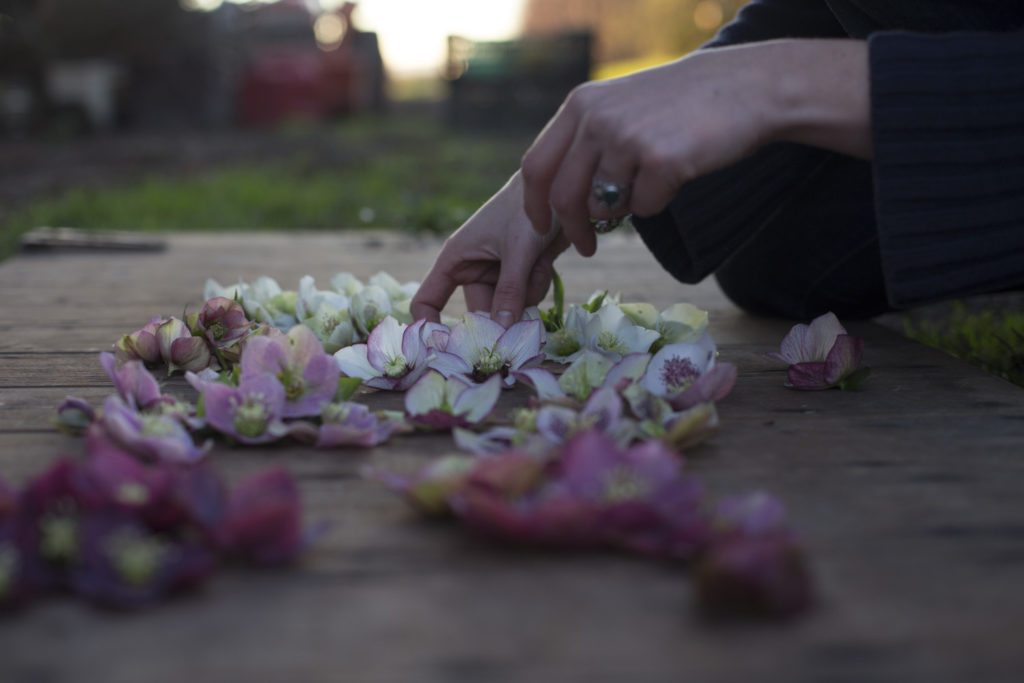
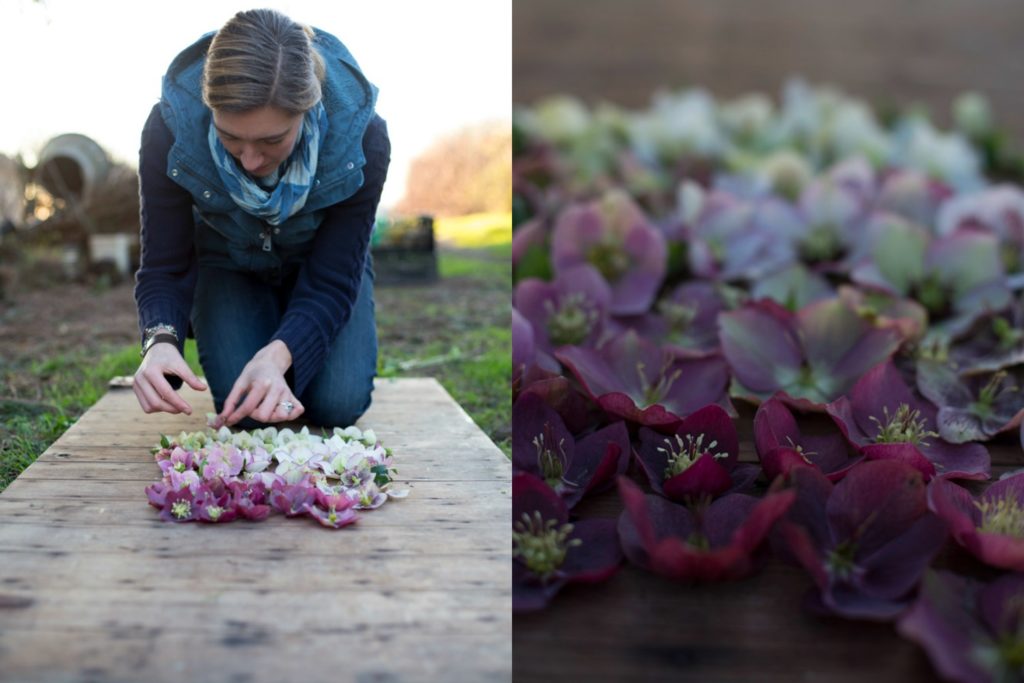
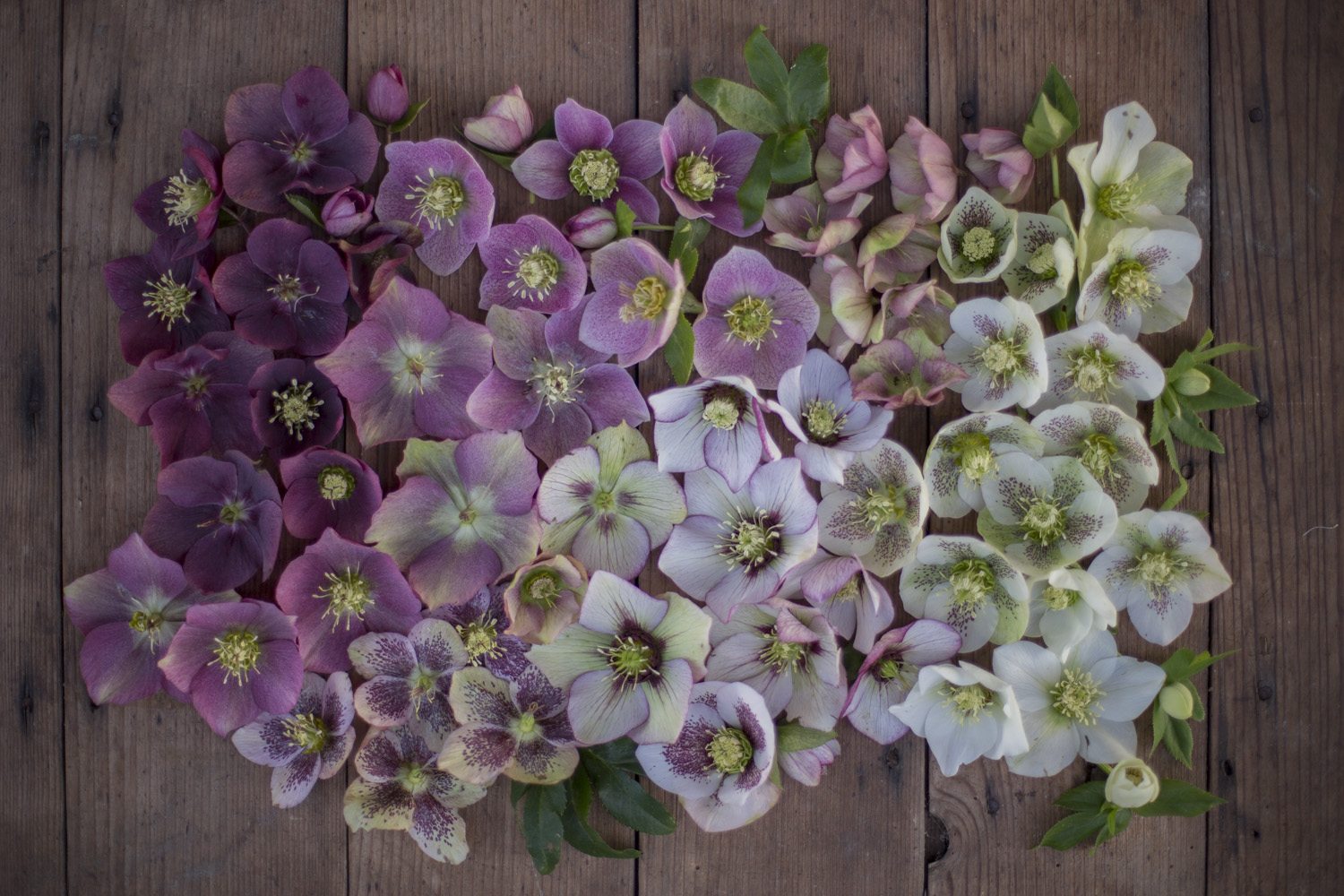 The number one question I get asked by flower lovers and designers, is how to get the blooms to last longer in the vase. Have you ever cut a handful of near perfect blossoms, brought them inside where they looked amazing, only to find them completely wilted and dead the next morning?
The number one question I get asked by flower lovers and designers, is how to get the blooms to last longer in the vase. Have you ever cut a handful of near perfect blossoms, brought them inside where they looked amazing, only to find them completely wilted and dead the next morning?
Well, here’s the secret for getting your cut hellebores to last in the vase: it’s all about practicing patience and harvesting them at the proper stage. I know this is hard! Trust me, I’ve broken this rule a lot, but every time I harvest them too early, the beautiful flowers rarely last more than a day. If you can just wait a little longer you be handsomely rewarded with long lasting cut flowers.
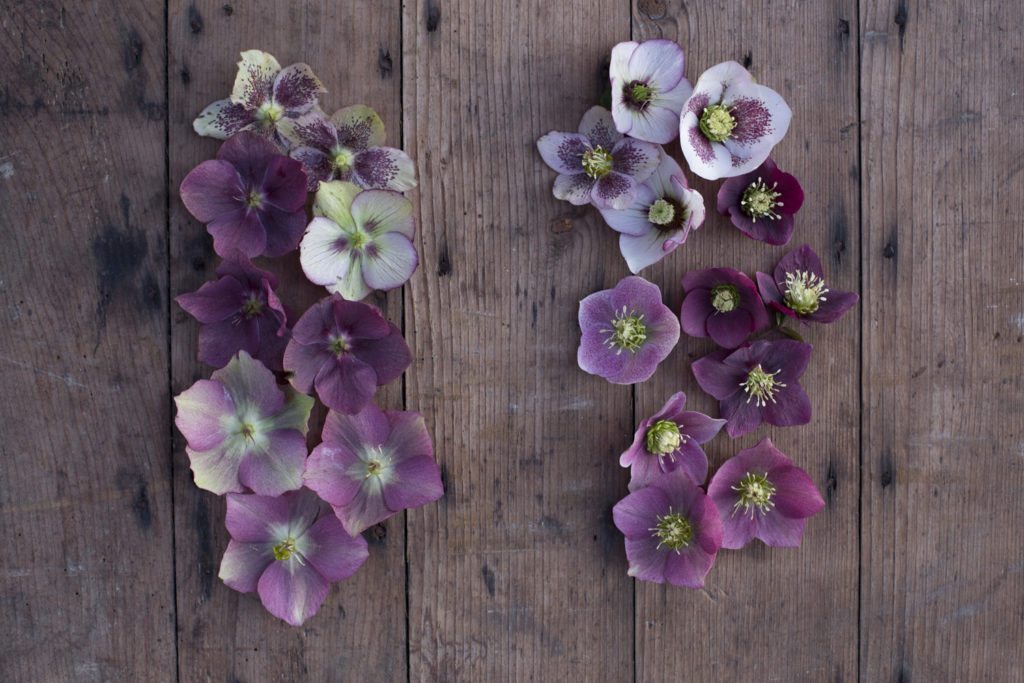 The key to telling a ripe hellebore from an unripe one is by checking the center of the flower. You’re looking for blooms that have dropped their stamens and started to produce seed pods. The more developed the seed pod, the longer the flower will hold.
The key to telling a ripe hellebore from an unripe one is by checking the center of the flower. You’re looking for blooms that have dropped their stamens and started to produce seed pods. The more developed the seed pod, the longer the flower will hold.
You see the blossoms on the left side of the photo above? Those guys are “ripe” and the flowers on the right are not. I know, the ones on the right are prettier; but don’t be fooled, they won’t last like you think the will. The next two images show more examples of blooms at the proper stage for cutting.
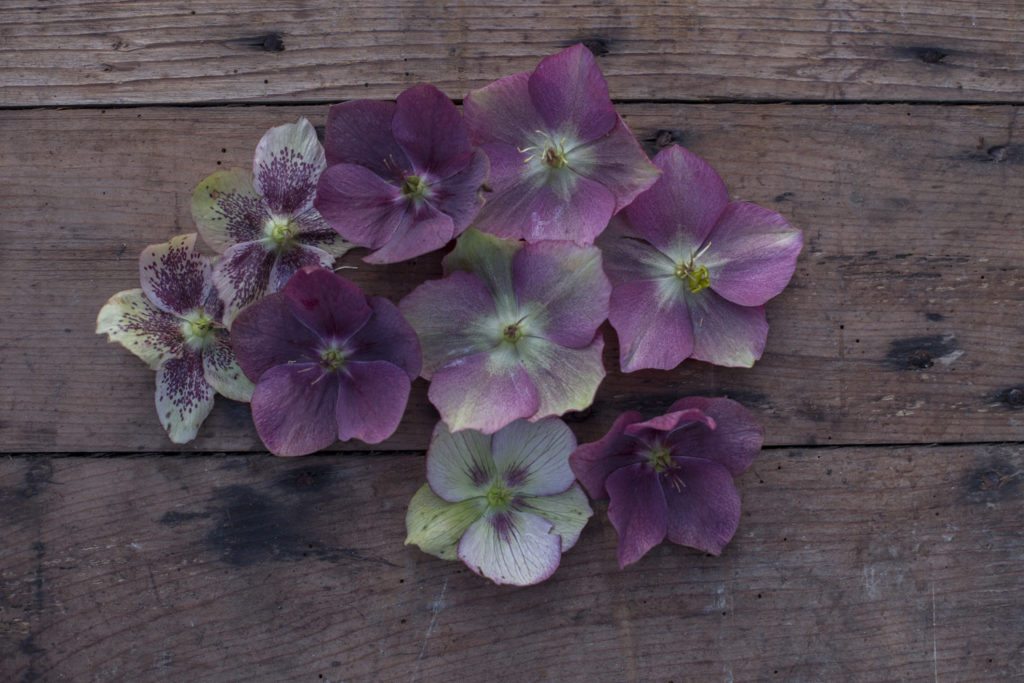
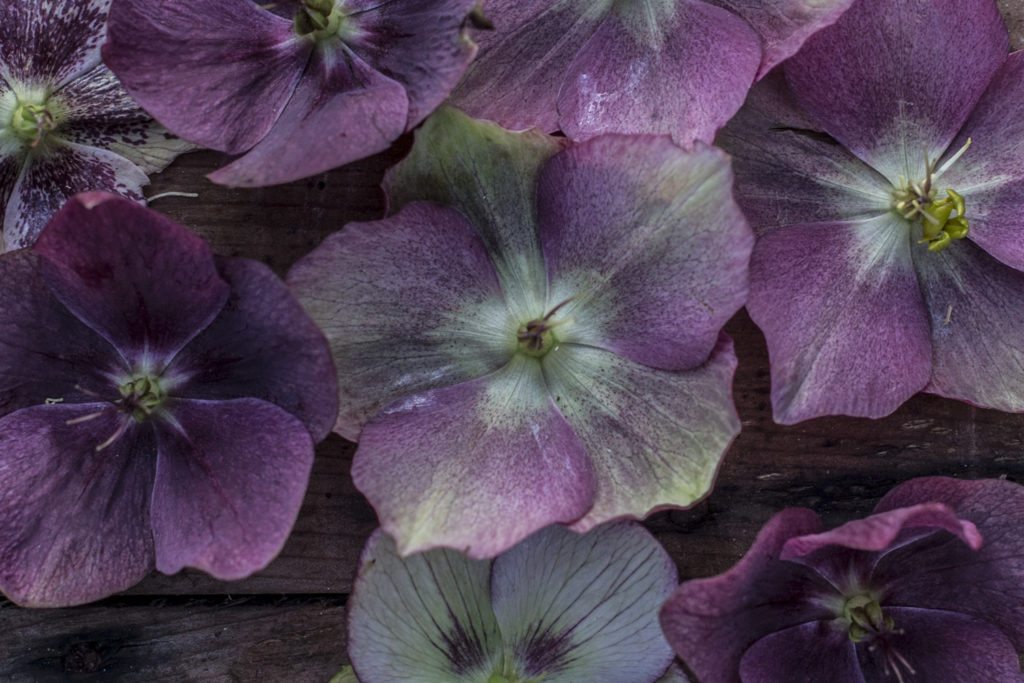 I’ve heard from so many florists that the cut stems they get from their wholesalers are almost always unripe. Many have reported that they’ve had the flowers crash more often than not, and no longer want to use them in arrangements because they are too nervous.
I’ve heard from so many florists that the cut stems they get from their wholesalers are almost always unripe. Many have reported that they’ve had the flowers crash more often than not, and no longer want to use them in arrangements because they are too nervous.
Meanwhile, some farmer-florists swear by a method of post-harvest care for unripe flowers that involves cutting a long, shallow slit along two sides of the stem. Have you tried this method or do you have any special tips or tricks that you use to lengthen the vase life? Have a favorite hellebore cultivar I should add to my garden? I’d sure love to hear your experience with this flower in the comments below.
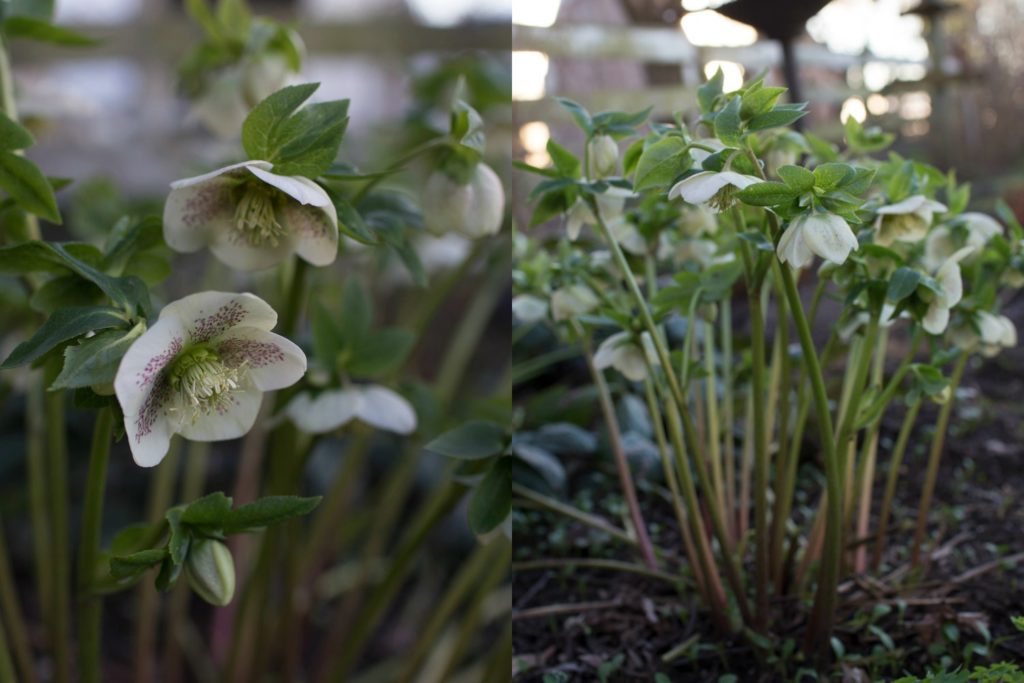

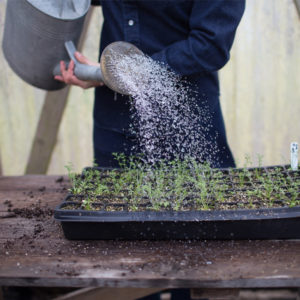

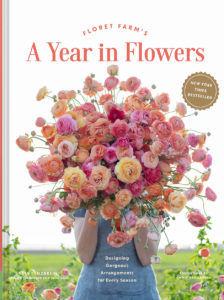
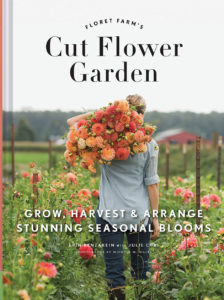


Andrea Mitchell on
Do you cut down your hellebores in the fall to the ground? Mine have been in the same state for 2 years with the same flowers on them. I am nervous to cut them down but feel like a will get more flowers if I do?